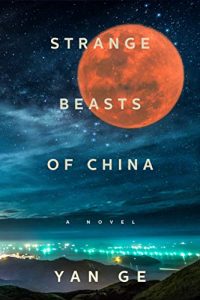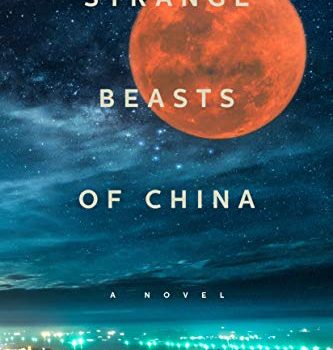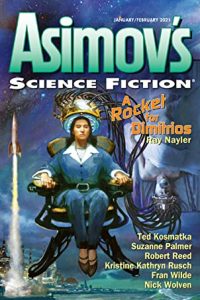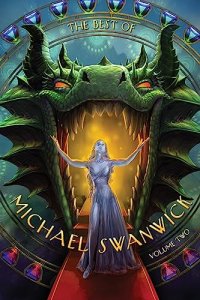Ian Mond Reviews Strange Beasts of China by Yan Ge
 Strange Beasts of China, Yan Ge (Tilted Axis 978-1911284444, £9.99, 220pp, tp) November 2020. (Melville House 978-1-612-19909-2, $25.99, 240pp, hc) August 2021.
Strange Beasts of China, Yan Ge (Tilted Axis 978-1911284444, £9.99, 220pp, tp) November 2020. (Melville House 978-1-612-19909-2, $25.99, 240pp, hc) August 2021.
As an author, Yan Ge’s remarkable career began when, as a teenager, she won a national short-story contest in China. She was quickly picked up by a publisher and released her first collection at the age of 17. By the time Yan Ge moved with her husband to Ireland in 2015, she had published thirteen books, including six novels, and had received multiple prizes, including one of China’s most prestigious literary awards, the Mao Dun, for Best Young Writer. Strange Beasts of China is Yan Ge’s second novel to be translated (by Jeremy Tiang) into English. (Unlike last month, I won’t grumble about how it took seventeen years for a writer, lauded and praised in her country, to find an English publisher). It’s one of Yan Ge’s earlier works, initially released monthly as a serial in 2005 by China’s Youth Literature magazine. As such, Strange Beasts of China has a mosaic quality, with each of the book’s nine chapters structured around one of the titular beasts that inhabit the fictionalized Chinese city of Yong’an.
Our tour guide through this modern-day bestiary is an unnamed novelist who studied to be a zoologist until she abruptly left university to become a writer. The novelist begins every chapter by condensing what’s known about each beast. She informs us that sorrowful beasts have a beautiful smile that they never display because “if they do, they can’t stop, not until they die;” that joyous beasts “love breakfast cereal and plain water, and dislike greasy, strong-tasting foods;” and that thousand league beasts, extinct for a long time, “could see a thousand leagues away, as well as a thousand years in the future.” The larger narrative involves the novelist’s investigation into each creature, a good chunk of which takes place in the Dolphin Bar, where she drinks a prodigious amount of alcohol and questions the city’s resident “busybody,” Charley. Her inquiry also sees the novelist butt heads with her old professor, who seems to know more than he’s letting on, and his assistant, who has this Cheshire Cat tendency of popping into the story when he’s required. As the novelist digs deeper, chronicling the government’s disturbing attitude toward its strange beasts, she uncovers a secret about her parents that has a bearing on her own identity, but also the residents of Yong’an.
In describing each beast, the novelist repeatedly points out that, aside from the odd distinguishing mark – a fin next to the right ear, a bone-spur on the ankle – they can pass as human. As the novelist’s mother puts it, “you can’t be sure that beasts aren’t people, or that people aren’t just another type of beast.” This observation is borne out repeatedly as, more than once, our protagonist is shocked to discover that someone close to her is, in fact, a beast. But it’s the mother’s insight that people might be another type of beast that proves to be the novel’s prevailing theme. Over the course of nine chapters, Yan Ge depicts humanity at its most beastly, whether it’s the Government deciding to wipe out all the sacrificial beasts to stop teenagers from mimicking their suicidal tendencies, or merchants fashioning the sought-after flesh of flourishing beasts into grossly expensive furniture, or the manufacture of a whole new species of beasts to educate children only to destroy the creature once it no longer serves a purpose. It’s a biting, savage portrayal of exploitation and discrimination that feels all too timely.
The novel’s environmental ethos is also very much of the now, with numerous, vivid descriptions of urban decay competing with the natural world. As an example, there’s a wistful moment where the novelist sees a bird rise into the air with…
an elongated body and exquisite movements, feathers as pale and radiant as a phoenix, all the colours of the world, soaring over Yong’an Forest, letting out a piercing cry, unbearably sad, circling the city once, then disappearing into the clouds.
As much I enjoyed the Strange Beasts of China, it does have a couple of quirks that are likely an artefact of serialisation. For one, there’s a phenomenal amount of vomiting. This isn’t entirely surprising given how much our protagonist drinks, but she loses her lunch so often that it does, at least for me, undermine some of the more dramatic set-pieces. Read month to month, these frequent episodes of vomiting could well have gone unnoticed, but when read as a novel, they do stand out. The plot also grows increasingly convoluted as the narrator digs deeper into her own identity with a succession of reveals in the final chapters that felt rushed and left me a little confused. Without access to the original monthly instalments, I can’t say how many of these plot beats were added when the serial was novelised, but the fact that Yan Ge updated Strange Beasts of China twice since its publication suggests she also recognised several rough edges that needed to be ironed out. These minor issues aside, Strange Beasts of China is a wildly imaginative and socially conscious novel that’s well worth your time.
This review and more like it in the August 2021 issue of Locus.
 While you are here, please take a moment to support Locus with a one-time or recurring donation. We rely on reader donations to keep the magazine and site going, and would like to keep the site paywall free, but WE NEED YOUR FINANCIAL SUPPORT to continue quality coverage of the science fiction and fantasy field.
While you are here, please take a moment to support Locus with a one-time or recurring donation. We rely on reader donations to keep the magazine and site going, and would like to keep the site paywall free, but WE NEED YOUR FINANCIAL SUPPORT to continue quality coverage of the science fiction and fantasy field.
©Locus Magazine. Copyrighted material may not be republished without permission of LSFF.








